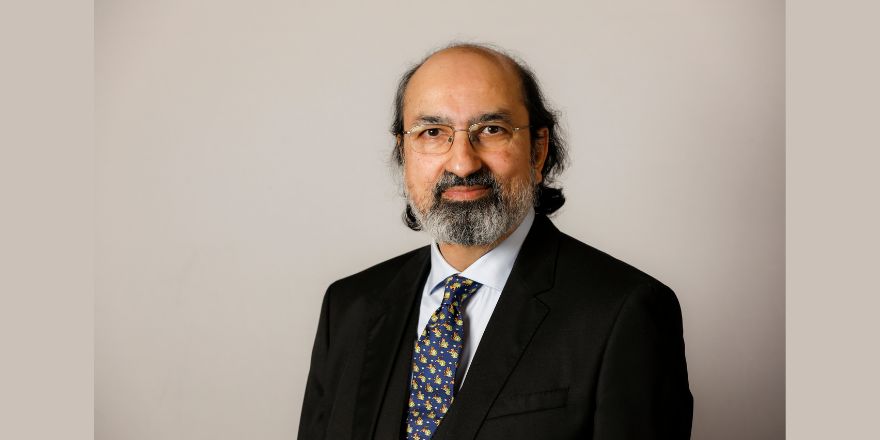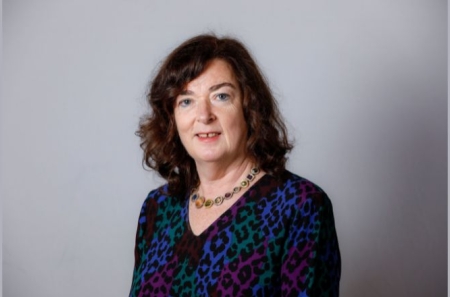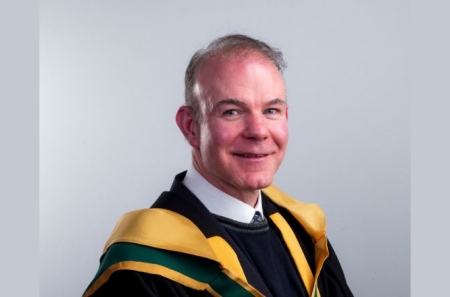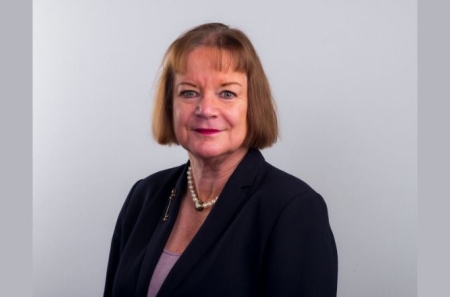
Nabeel Agha Riza MRIA: Inventor
07 June 2023Professor Riza’s research and invention activities are driven by free thought. He believes that being a teacher is a privilege; that great scientific research and teaching go hand-in-hand and can empower each other and the next generation of thought leaders vital to society.
Nabeel Agha Riza is Chair Professor of Electrical and Electronic Engineering and former head of the School of Engineering at University College Cork.
I am an inventor by nature and utilise my life experiences and creative ability to solve pressing challenges and to impact society positively. The study of light is my passion, and I have been privileged to produce inventions that are helping society globally. My scalable digital micromirror device-based optical signal equalisers and routers are used in the optical-fibre based internet infrastructure. My free-space fibre–fibre light coupling models and optical beamforming techniques have been used to design and deploy low-loss optical components, including the very large port count datacentre optical circuit switches that route high-data-rate optical signals for internet traffic around the globe.
Over a 34-year career, I have encountered challenges in a variety of settings: as an applied scientist for the General Electric Corporate Research and Development Center in the US; launching and operating my US start-up company Nuonics; dealing with academic administrative and management issues in 2011 during the Irish economic crisis as head of the Department of Electrical and Electronic Engineering, and later as head of the School of Engineering, at UCC. In all these challenging settings, I engaged the problem-solving skills I learned as a globally trained and travelled engineer, to produce the best results for the mission at hand.
I believe good engineers can solve any problem, using their foundational scientific knowledge and logical thinking combined with real-life experiences. I received my scientific doctoral training, focusing on physics and mathematics within an engineering context, at the California Institute of Technology (Caltech), where I was fortunate to be taught by great scholars with personality: the late physicist and Nobel laureate Professor Richard Feynman, the late electromagnetics world expert Professor Charles Papas, and NASA Jet Propulsion Lab chief scientist and data communications expert, the late Professor Edward Posner. They taught me that teaching is like theatre: you need to deliver your message with wit and humour, using audience interaction, creating an enjoyable environment, even when the content can be scientifically challenging and appear boring. When I became a professor in 1995, I adopted this interactive teaching style, so that my students too could enjoy learning what are otherwise generally considered dull subjects—electromagnetics, radio frequency transmission lines and optics, all underpinned by rigorous mathematics and physics.
Being a teacher is a privilege; one can empower the future generation of thought leaders vital to society. A teacher who is also a research scholar of highest standards can serve as a role model for the younger generation, showing that great scientific research and teaching go hand-in-hand and can empower each other. With this as my motivation, between 2011 and 2013 I wrote a textbook to teach the art of photonic design for creating optical systems to manipulate signals found in the modern world. The book (Photonic signals and systems: an introduction, McGraw Hill, 2013) was intended first to provide the rigorous foundations of photonics in the simplest way possible, and then to use these foundations to create visually pleasing yet powerful inventions to solve pressing problems in the fields of data communications, medical imaging and energy and aerospace systems sensors. The book relies on many of my optical inventions. When the Covid-19 pandemic and lock-down hit Ireland, I started to provide free, downloadable copies of my book and teaching materials to help students world-wide.
Free thought drives my research and innovation activities. It is my desire that my research career in optics-based engineering science can impact people physically far from me as well as those close to me, so that they too can ‘see the light’ and make a better life for themselves and others around them. One never knows, perhaps some of the next generation of engineers will have ’fun’ inventing with light, as I have throughout my lifetime, so that the future can indeed be brighter!
My career story, along with details of my research, teaching, honours, patents and international publications, and free, downloadable materials, videos and more, are available at www.nabeelriza.com.



